The question engine (and other component) manufacturers ask isn't "to test or not to test?" as they develop new models. Instead, it's "Who should do the testing?"
Engineers have long verified their designs by creating prototypes and testing them thoroughly. The trouble is, testing equipment is expensive. The equipment necessary to accurately measure engine emissions for the Environmental Protection Agency (EPA) and European environmental counterparts is especially costly. So in this age of more stringent emissions regulations, engine OEMs often contract with independent labs to do the testing for them.
"Engine and component manufacturers appreciate the quick response and independent/unbiased data a third-party test lab like ours provides," Dean Schoppe, senior project engineer at Intertek Automotive Research, says. "This is especially true if the OEM lacks internal testing capacity."
Credibility is key
For the Scuderi Group, a small entrepreneurial research firm that proliferates intellectual property through licensing, "It's extremely important to work with a third-party test lab because it means credibility," Stephen Scuderi, vice president, explains. "It's the only way for us to be able to approach a large OEM. We don't intend to manufacture engines. All we do is develop proof-of-concept prototypes and go to large OEMs that will hopefully license our technology and develop actual production prototypes."
This is the group's first engine project, so it looked for a test lab that could provide all the independent data that a large OEM would want. "Without it, everything we would give them would be viewed as suspect," he says.
"The independent lab that we use has a great deal of expertise in development of engine technology, so in addition to credibility, it adds a great deal of development expertise," Scuderi points out. "That's an enormous advantage. We provide all the funding, manage the program and market the concepts. We harvest the intellectual property and file it around the world. Our lab, however, aside from the inventor's idea, has the primary responsibility of solving all the technical challenges to get us a working prototype. So there is great value from the lab providing technical expertise."
Another important value-added benefit the Scuderi Group appreciates in the third-party lab is "when we pay the lab, we own all the intellectual property," he adds. "We don't have to negotiate as to who owns what; there's no question. This was a very big draw for us."
The same, but different
The Scuderi Group has followed the typical development cycle that any large OEM would follow. "All start with the basic concept and struggle through to the proof-of-concept prototype," Scuderi says. "That usually involves a flexible laboratory engine to prove the basic concept benefits. In our case, it's the combustion process. From there, you go to production prototype, one that would fit into a vehicle. What's not typical is that we're a small entrepreneur — this is usually the big boys' regime."
He adds, "Our lab has proposals from small independent entrepreneurs about monthly and has done hundreds of initial evaluations, but we are the only one that has gotten this far. We will have our prototype up and running by third quarter 2008. We started working with them on the paper process in 2002."
The Scuderi Group intends to build several prototypes. "The first will be a basic, conventional configuration," he says. "The second, in a 2009 time frame, will be our air-hybrid. We're very confident that it will have a major impact on the market."
Currently, the group is getting into the hardware phase of the engine. Until now, the design work has focused on one-dimensional thermo-dynamic and 3-D computational fluid dynamic studies. "Our lab has two major software tools and a variety of others to help us design the engine and overcome one issue after another," Scuderi notes. "We're now ready to do subassembly component testing on a test rig in a test cell. The first will be valve train testing which will begin in February."
The firm has no worries about trade secrets. "Our lab is very reputable and very strict in dealing with many large OEMs. If it didn't keep confidentiality, its reputation and business would suffer," he concludes. "I can only say good things about it. Sometimes there's a bit of a culture clash — the entrepreneurial spirit vs. the scientific mindset, but when you work out those differences, you get a great team."
Services offered worldwide
Independent test labs are located around the world. One is MTT Moteurtest, an 18-year-old French company specializing in engine tests on power benches.
"As a general and complete engine test center for light and heavy vehicles and light aircraft, we are able to provide various services to engine manufacturers," Grégory Bourdeau, testing engineer and manager, says. "Our services include standard endurance and technical tests on a full engine or a specific part. We are able to adapt our technologies to any requirements and manufacturer specifications. Our strengths include the ability to combine a large number of constraints in a minimum time frame."
MTT Moteurtest owns a special cell dedicated to exhaust system testing. "Environmentally friendly engine systems are now required in all major markets," he explains, "so our company has extended, adapted and modified our test cell facilities. For example, in one cell we fit combustive air, controlled in temperature and hygrometry, for testing air intake systems. We also have a way to perform a five gas-bay analysis that is connected to the exhaust line. This can sample air and measure efficiency cylinder-by-cylinder or can test before and/or after the 'anti-pollution' devices."
Bourdeau says MTT Moteurtest performs smoke meter analysis for emissions control and is constantly improving its skills and extending its experience in terms of active diesel particulate filters (DPF).
The company is able to carry out tests on any liquid (diesel or gasoline) or gas carburant such as LPG, compressed natural gas (CNG) or reference gas in bottles. For heavy-duty engines, the facility can test up to 8,000 rpms with a maximum torque up to 3,500 Nm (800 hp).
As for data acquisition software, MTT Moteurtest has designed its own. "With it, we are able to capture data and control electrical systems and regulations," Bourdeau points out. "We are able to communicate with our customers' hardware and software system by recovering information the engine control unit generates. As a manufacturer partner, we use the latest version of failure diagnostic systems and specific software that remain the property of the manufacturers."
Closer to home
Intertek Automotive Research, in San Antonio, has been an independent testing facility since 1953, serving automotive and heavy-duty engine OEMs, Tier I suppliers, and the fuels and lubricants industry. Its ISO Guide 17025 accredited facilities cover 18 acres, with all the equipment necessary to run thorough engine emissions testing programs. This includes a variety of dynamometers, combustion analysis equipment, smoke and opacity meters, a partial dilution tunnel for particulate mass measurement and much more.
A sister company, Intertek CES (Carnot Emissions Services), also in San Antonio, is a research and development facility specializing in the off-road engine industry including the small off-road engines (SORE), large spark-ignited (LSI) engines, compression-ignited (CI) engines and stationary source engines. "Reductions of exhaust emissions require extensive engine research, development, testing, durability, and certification services to meet both government and consumer needs," Schoppe says.
This facility tests a variety of engine fuels, including gasoline, diesel, liquefied-petroleum gas (LPG) and natural gas, used in two- or four-stroke, water- or air-cooled, and vertical- or horizontal-shaft engines.
"With both facilities, we can run nonroad transient test cycles and other transient and steady-state test protocols, EPA test protocols, production audit testing, and validation of designs, aftertreatments, catalysts, oil consumption, etc.
hese are often what's needed to prove an engine is EPA compliant," Schoppe points out. "We offer design assistance based on past experience, often being included in a customer's internal task force and using our expertise to create test programs to solve problems. Customers tell us they appreciate our interaction and proficiency with diagnostic/PCM manipulation, willingness to help with field-related issues and in their own training programs."
Intertek's capabilities include testing engines up to 600 hp and 2,000 ft.-lbs. using gasoline, diesel, renewable fuels, biodiesel, alcohol blends, compressed natural gas and more.
Also in San Antonio is the Southwest Research Institute (SwRI), an independent, non-profit, applied engineering and physical sciences research and development organization established in 1947. It has more than 3,000 employees and about one-fourth of them work in the automotive sector, which includes development of on- and off-road engines, advanced emissions research, as well as fuels and lubricant qualification. "We conduct engine, emissions, and vehicle research and development under contract for commercial firms and governmental agencies (think EPA and DOE). For engine manufacturers, we do everything from emissions audit testing to complete design and development of a new engine from scratch." Terry Ullman, assistant director, engine and vehicle technology department says. "We pride ourselves on confidentiality and the ability to work with design teams."
Ullman finds that the off-road industry tends to prefer proven and older designs. This presents a challenge when faced with increasingly stringent emissions requirements. "Our design teams are familiar with the fuel systems, control algorithms, aftertreatments, catalysts and lubricants employed on on-road engines, so we can help the engine manufacturers meet new requirements and still conform to some of their own needs. An example is that the client might want to preserve some design elements, so the company doesn't have to invest in all new production tooling."
He adds, "Sometimes after an engine or other component is in the field, problems arise. Our experienced people can help a company's design team perform failure analyses and critical design reviews to find a solution, as well."
SwRI can test engines using all varieties of fuels and has helped OEMs convert from diesel to natural gas, develop hybrid vehicles, etc. And, as off-road emission test requirements shift from the steady-state to transient tests, the lab can handle engines up to 800 hp in their cells. One test cell can simulate altitudes of over 10,000 ft. for performance and emissions development of engines that will operate at high altitudes. "We've worked with engines from small 5 hp single-cylinder engines to more than 3,000 hp," Ullman notes.
"We are the only independent lab in the U.S. with facilities for complete locomotive engine emissions testing and development."
Former OEM Off-Highway Editor Kay Falk is a freelance writer from Fort Atkinson, WI.
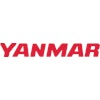
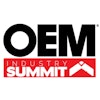
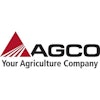
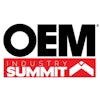




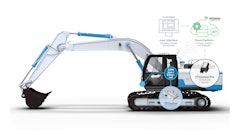

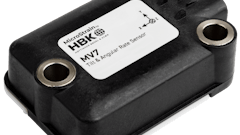
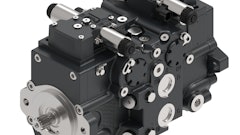

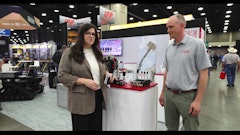
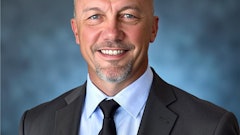
![Sa P75 I Sahr[80]](https://img.oemoffhighway.com/mindful/acbm/workspaces/default/uploads/2025/10/sa-p75-isahr80.Cn3n79HB4H.jpg?ar=16%3A9&auto=format%2Ccompress&fit=crop&h=135&q=70&w=240)